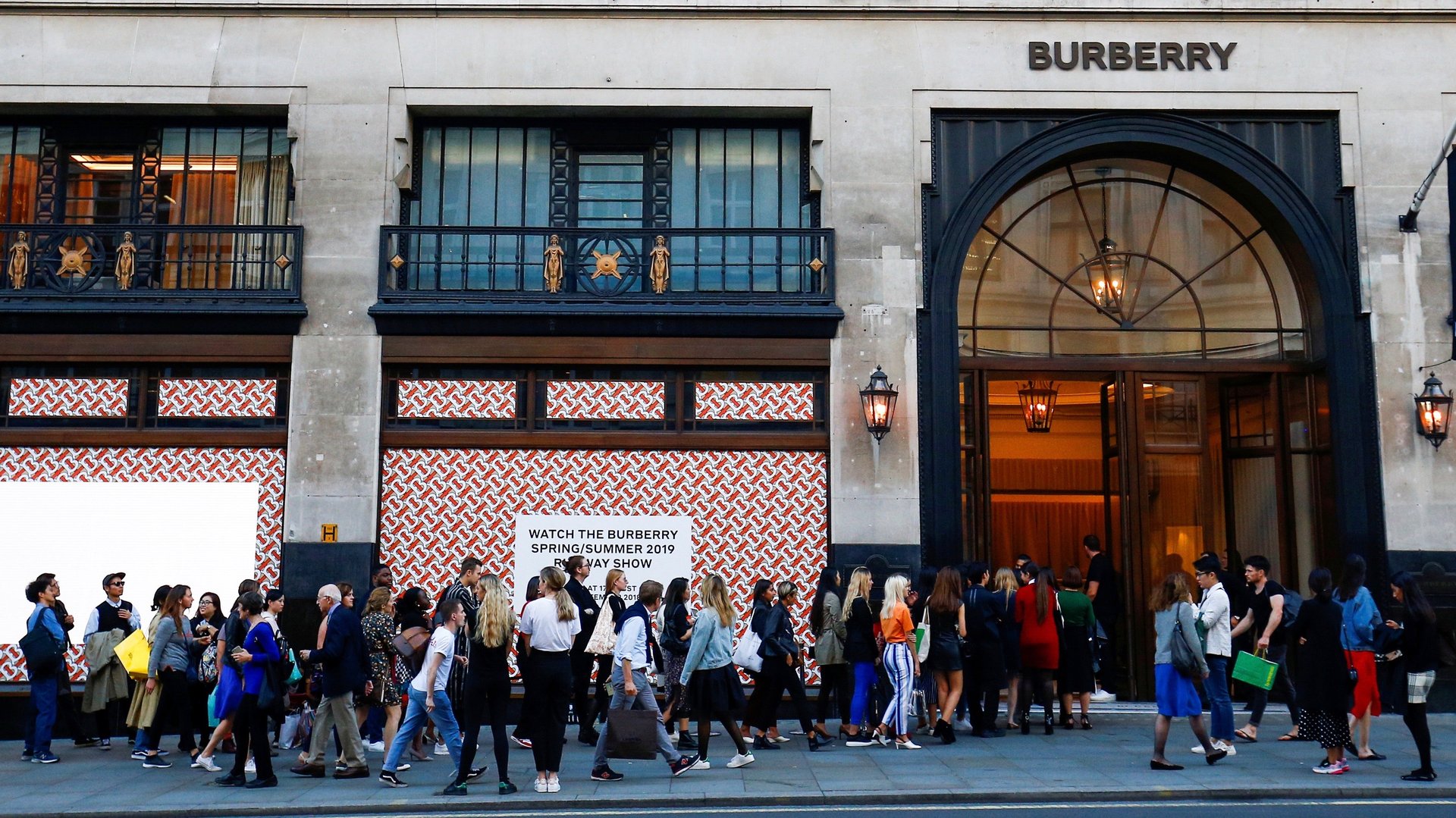Burberry’s new campaign aims to be inclusive—sort of
Luxury brands, like the rest of fashion, are inviting everyone to the in club. Diversity and inclusivity are the à la mode words of the day, and runways and campaigns are attempting to reflect a broader understanding of beauty than in the past, including models of all sizes, races, ages, and abilities.


Luxury brands, like the rest of fashion, are inviting everyone to the in club. Diversity and inclusivity are the à la mode words of the day, and runways and campaigns are attempting to reflect a broader understanding of beauty than in the past, including models of all sizes, races, ages, and abilities.
Burberry, the iconic British brand best known for its pricey trench coats, is not immune to the trend. Under its latest creative director, Italian designer Riccardo Tisci, the company hopes to emphasize inclusivity and ”shift consumer perception,” according to its latest earnings report (pdf). “The thing that excites me the most about Burberry is how inclusive it is, it appeals to everyone no matter their age, their social standing, their race, their gender,” Tisci said in a statement on Jan. 24.
But not everyone can be brought into the gabardine-and-plaid fold. Anybody who’s monied can certainly shop Burberry, whatever their race or age or nationality. But they’ll have to be under a size 14 in the US. And when it comes to the company’s target class demographic, it would be much more accurate to call it exclusive—as all luxury brands typically aim to be. After all, a classic Burberry trench costs about $2,000, which is obviously prohibitive for the vast majority of consumers. (This reporter got a child-size version in December on sale for $690, and that was after a few years of reflection and research.)
Burberry, then, doesn’t see modern luxury and inclusivity as mutually exclusive. Its definition of inclusivity applies to dressing multiple generations and accommodating many styles, from classic to street wear. (Quartz reached out to the company to discuss the role of class, but Burberry declined to comment.)
Of course, there is no human right to luxury clothing, though it would be nice if everyone could enjoy the finer things in life. But it is nonetheless noteworthy that Burberry employs the language of equality to promote brands that are out of reach for the vast majority of people on Earth. And it only reflects a much graver problem.
Despite all the talk of equality, inclusivity, and diversity that is bandied about by companies and the wealthy, income inequality is growing around the world at alarming rates. Last month, a report by Oxfam noted that in 2018, income inequality has only ballooned. Currently, the globe’s 2,200 billionaires hold $900 billion. Their wealth rose at a rate of 12% in the last year, while the poorest half of humanity saw an 11% drop simultaneously. And 26 of the world’s richest people have as much wealth combined as the indigent half of the global population.
And so, while global luxury brands like Burberry can focus on catering to the upper echelons of society, they’re still affected by the economic realities of the people who cannot consume their products. During the Burberry’s Jan. 23 earnings call (pdf), for example, it was noted that the Yellow Vest riots in France, which began as a working class protest of rising fuel taxes, forced store closures in Paris on a few Saturdays before Christmas. “[A]nd that did impact the mainline trading in France,” admitted Julie Brown, the company’s chief financial and operating officer. “But France as a country is about 3% of our sales so it wasn’t that material.”
It is perhaps easy to dismiss the potential impact of people’s anger over social and economic problems right now. But if inequality continues to rise even as the rich, and the exclusive brands that serve them, co-opt the language of equality, they may not be able to ignore the less privileged for long. “It is ultimately in the interests of all of us all—rich and poor, within and across nations—to pursue social justice, economic security, ecological sustainability, and peace,” as Frank Stillwell, the author of The Political Economy of Inequality, writes in The Globe Post.
Companies are surely aware of this on some level, and have succumbed to pressure to prove they are responsible and conscious global citizens. Burberry, for example, is working to make its supply chain more ecologically sustainable. The brand committed to become carbon neutral in its operations by 2022, and last year partnered with UN Climate Change to launch the Fashion Industry Charter for Climate Action, which aims to cut aggregate greenhouse gas emissions produced by the fashion industry by 30% by 2030. That’s an admirable effort—one that reflects precisely the kind of consciousness that the brand’s campaign touting inclusivity ignores.